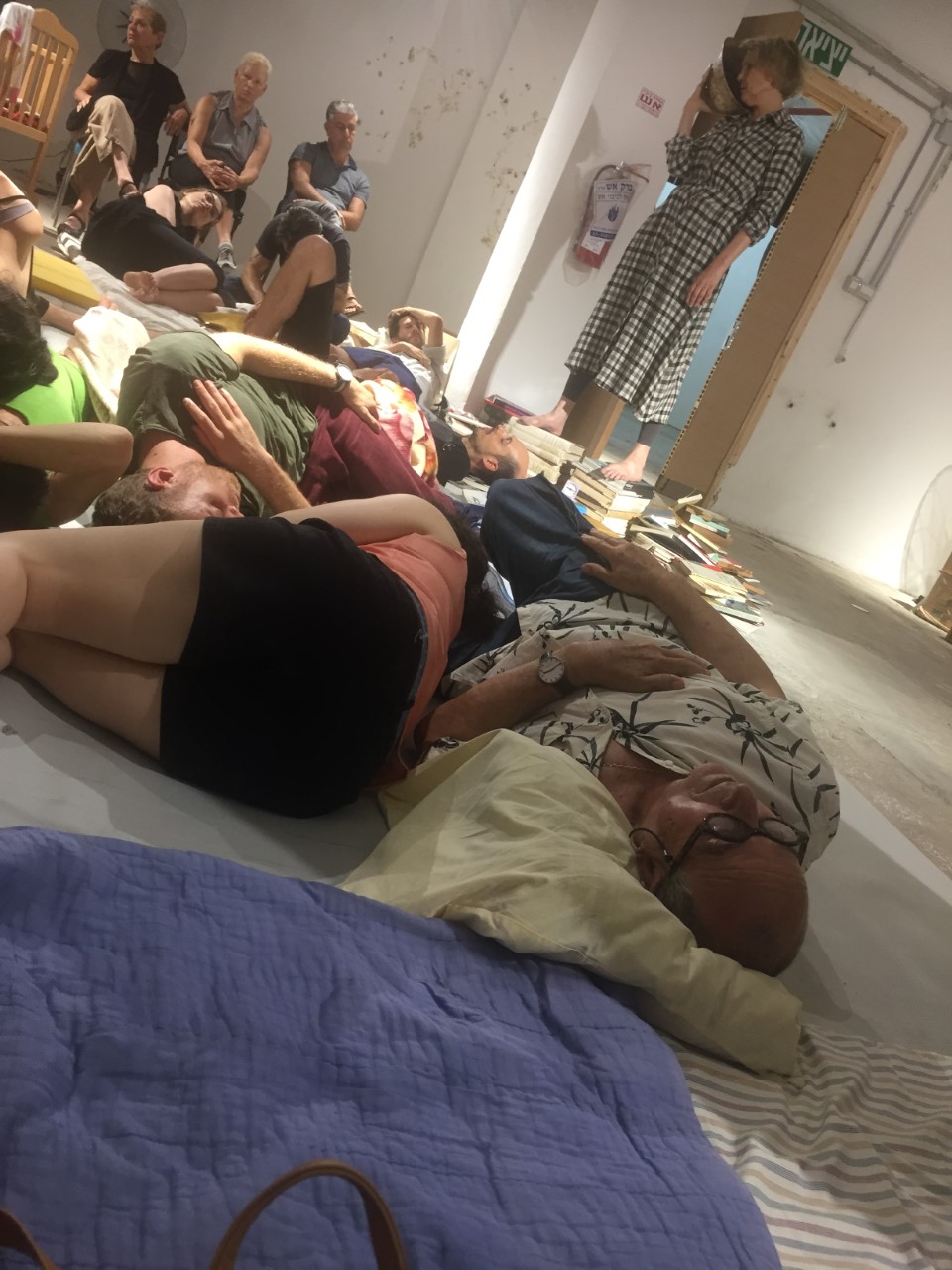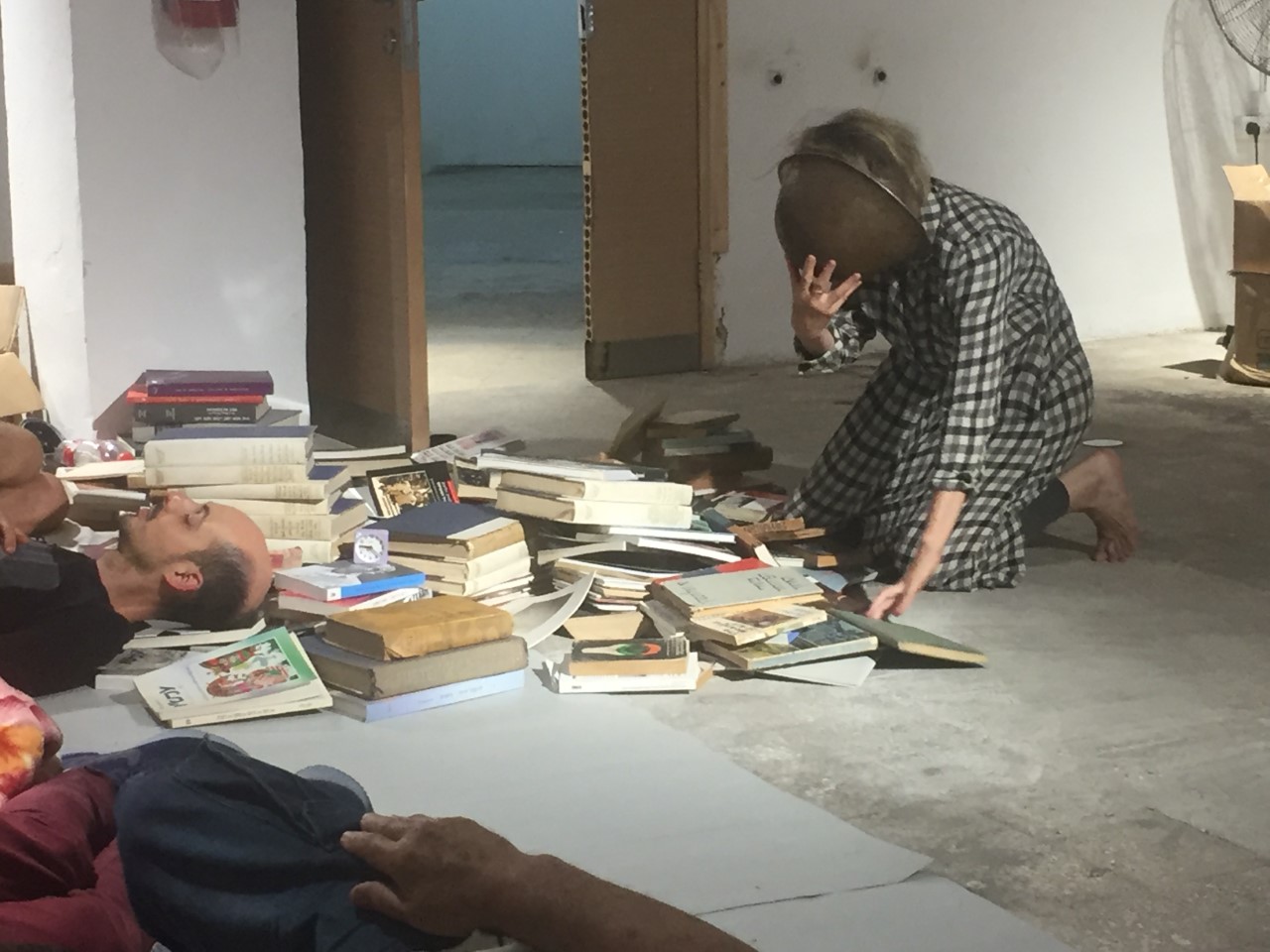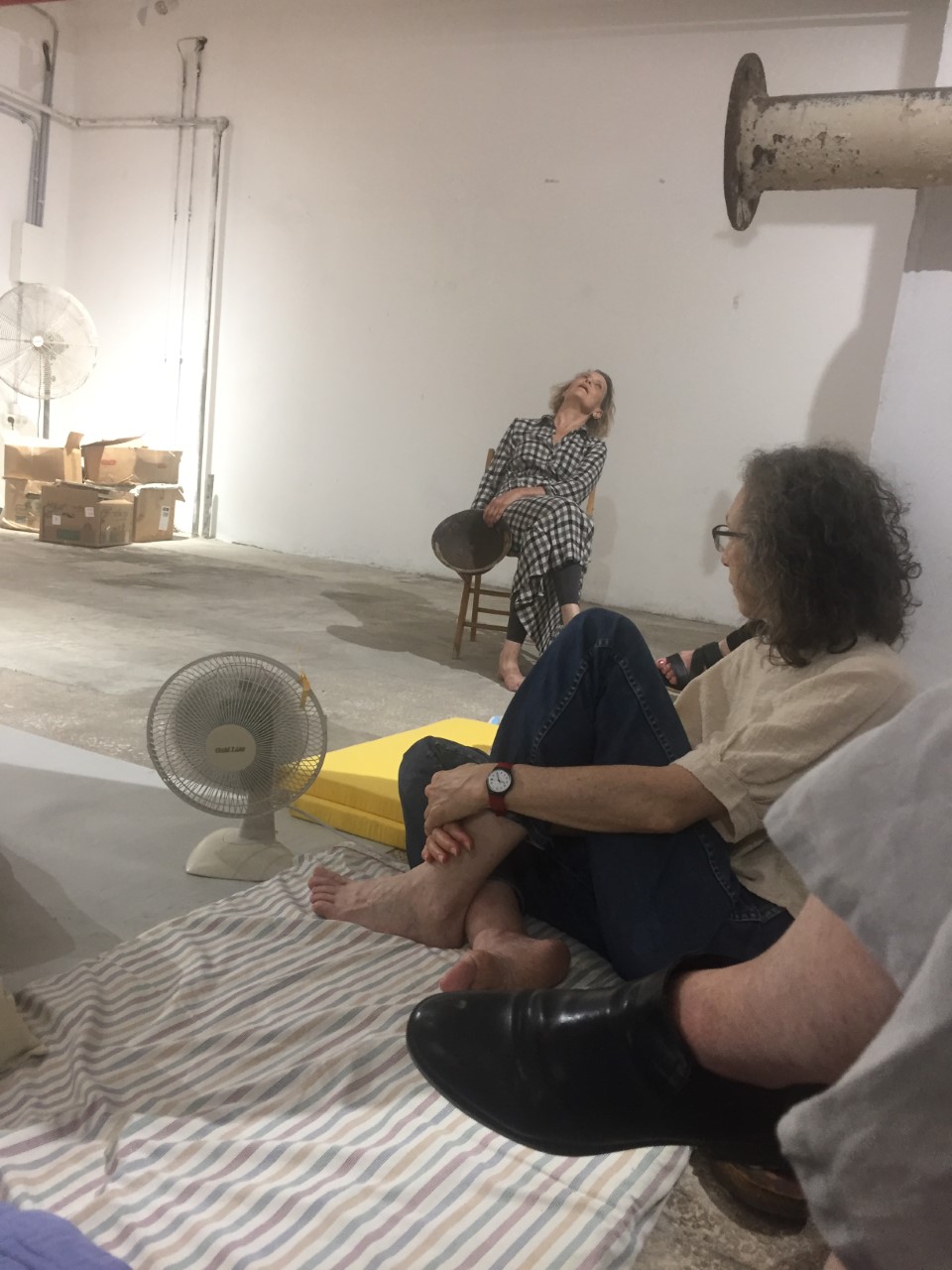- ארץ ישראל יפה וגם פורחת / רקפת א. ידידיה
- In-between / Ana Lama, Bordeaux
- In-between / Adina Bar-On
- 9 Questions / Gustaf Broms
- A reaction to the performance In -between \ תגובה למופע בין לבין
- A reaction to the performance In -between \ תגובה למופע בין לבין
- A reaction to the performance In-between\תגובה למופע בין לבין
- ערב רב, כתב עת לתרבות ואמנות / אפי בת-אילן
- The Gaze in Adina Bar-On`s Performance-art/Adina Bar-On
- על "בין לבין" - נכדתי בת השלוש עושה פרצופים לפני הראי\ יעל קיני
- תמר גטר \ עדינה בר-און
- בין דימוי לתוכן: פרפורמנס ארט של נשים בישראל - על עבודתה של אמנית המיצג עדינה בר-און\גילי סיטון
- קולות של עדינה בר-און - ראיון עם עדינה בר-און \ ערגה אלמוג
- Her Body Knows: Adina Bar-On`s Art of Connection and Atention - בגוף אני מבינה: אמנות הקשר והקשב של עדינה בר-און \ Dr. Idit Suslik - ד"ר עידית סוסליק
- האם את מדברת אליי? בין טקסט נרטיבי לקול הלא-מילולי באמנות המופע של עדינה בר-און\ ערגה אלמוג
The 6th UP-ON International Live Art Festival; ChengDu, China/ Oct. 2018
Galeria Ana Lama, Arte Extremo; Lisbon, Portugal / Apr. 2019
The Refrigerator Gallery; Tel Aviv, Israel /July, Aug. 2019
Labirynt Gallery; Lublin, Poland / July 2019
Villa Gallery; Jerusalem, Israel / Aug, 2019
POLIN Museum of the History of Polish Jews; Warsaw, Poland / Oct. 2019





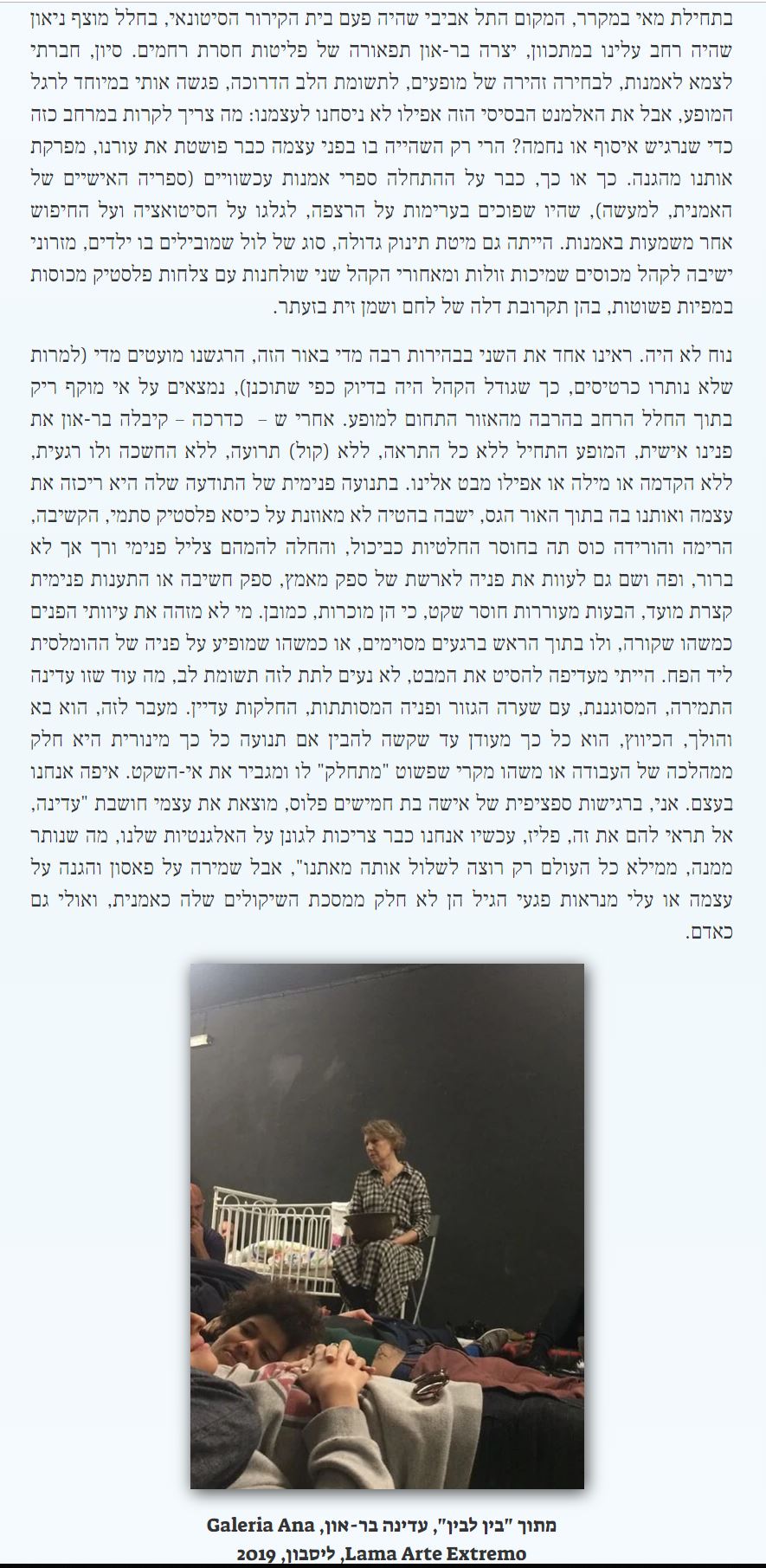

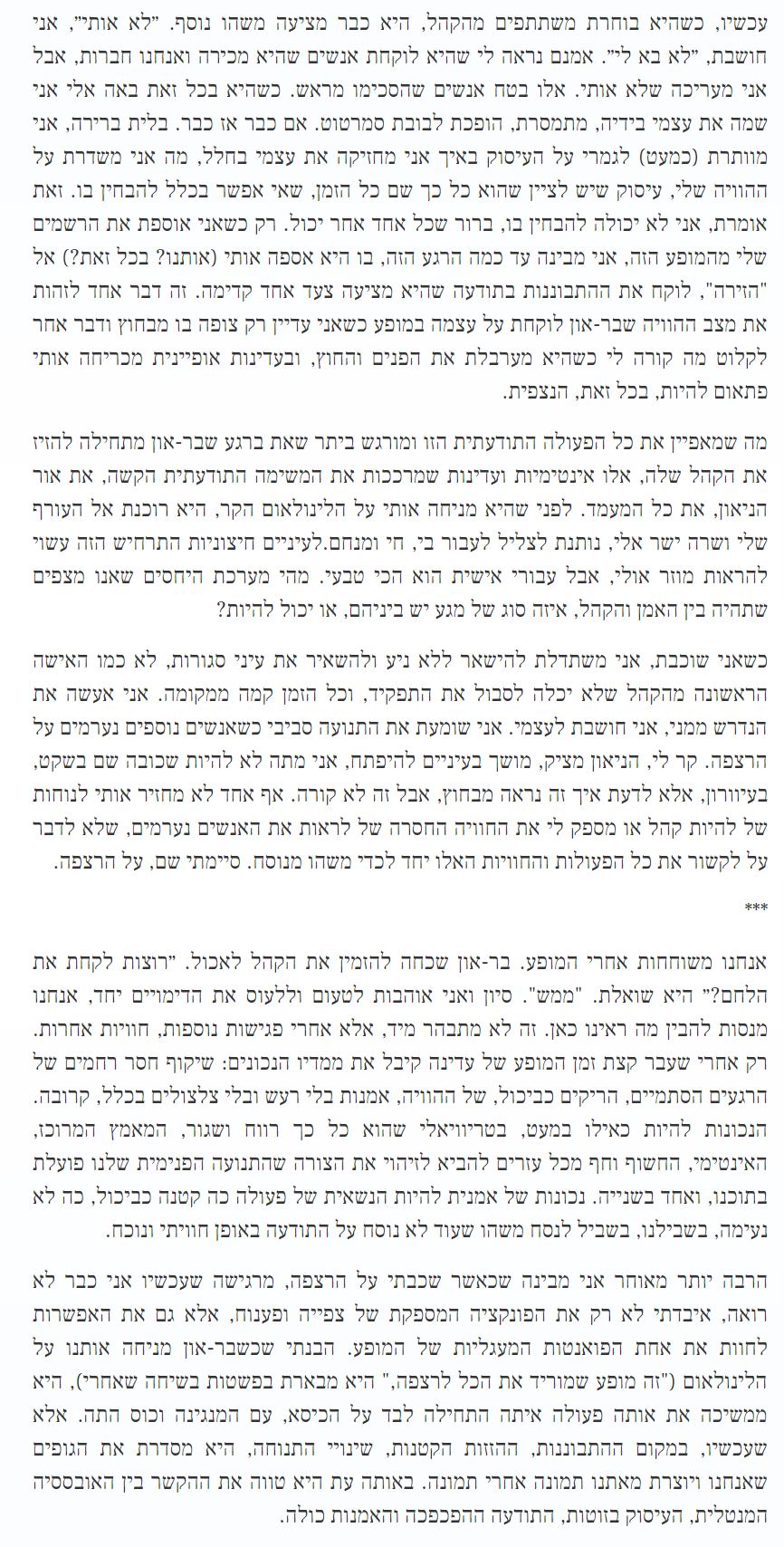





About “In-between”
Bar-On, one of Israel’s preeminent performance artists, is staging a new performance which focuses on transitional phases and transitional zones as an existential theme. The performance will take place in Tel Aviv and Jerusalem. The chosen locations for the performance (in the two cities) are spaces that have been transformed as a result of urban changes each city has undergone. “The Refrigerator” is a space that used to serve as the refrigeration hub for the wholesalers market in Tel Aviv, and has recently been turned into an artists’ exhibition and work space. Galeria Villa, in Jerusalem, is a space was formerly the home of a Palestinian family, and today serves as Emunah College’s contemporary art exhibition space. These spaces have an emblematic role in Bar- On’s work, and join the repository of symbolic objects at the basis of her singular artistic idiom. Objects such as carts, piles and bundles, which inevitably raise a discussion regarding migration and transitional junctures, point to something central in human experience. Bar-On directs us towards moments of crisis or junctures that shape our identity and determine our fate.
The performance takes place in a space with books scattered on the floor as they might be immediately after, or before, a move. Mattresses are scattered on the ground as well, not yet fixed in their bed frames. Bar-On invites the viewer to step out of his (or her) steady, snug standpoint, to abandon his firm stand on solid ground, or the safe haven of his seat, and to fall on the ground. There one can experience a temporary rest, a restless hiatus – a brief infinity, infinitely short. Thus the spectators, while lying down, will face the strained wheel of time.
In the course of the performance the viewers, guided by the artist, are turned into active participants. In this way the audience takes part in a sort of existential journey, and in an encounter between self and other, artist and spectator. At the intersection where this encounter takes place, Bar-On turns to the audience and asks: “Would you like to eat?” Her direct address represents the duty of the host who, like Abraham, is surprised by his itinerant guests, and though he has had no prior notice, immediately sets out to provide for them.
In the course of the performance, Bar-On leads a random audience member to his “rest” with her lamentation, which sounds like that of wailing women at a funeral. Sometimes her voice echoes from a helmet that was dropped on the ground, and reminds us of the nature of the place where we live. The dropped helmet is a kind of Shofar: the artist’s voice sounds through it, a broken voice like that of the broken blast (“shevarim”) sounded during parts of the Kippur service and turned towards heaven.
The issue of transition has recurred over the forty-six years of Bar-On’s groundbreaking work. Some of her performances present biographical transitions, such as the transition from wife to widow, symbolized by the figure of a woman clasping the empty helmet. Other works show the movement between different emotional states, from interiorized mourning, to release and opening unto the unknown. In this performance, the theme of transition receives radical treatment; it becomes the central question asked by human beings in fear and trembling as they stand before death recognizing mortality and courageously choosing life.
Dudi Brailovsky






























































































